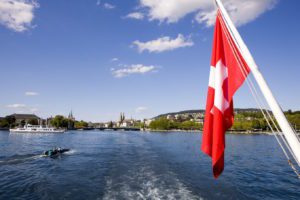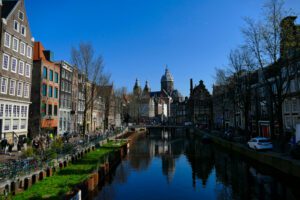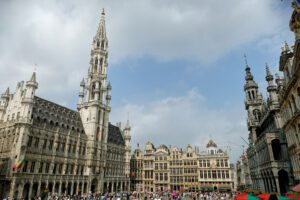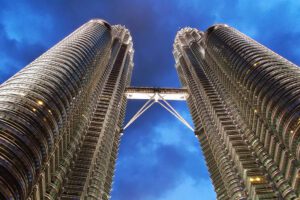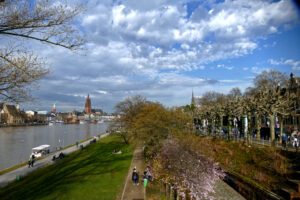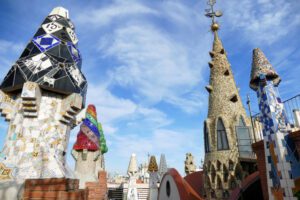Latvia’s national airline, AirBaltic, often offers convenient connections including a stopover in Riga. That’s perfect for getting a profound glimpse of the city on the way to your final destination. And with my guide to 24 hours in Riga, I help you turn a pitstop into a real travel highlight.

Explore the charming Old Town with its medieval alleys, cafés, and Art Nouveau façades, or take a stroll along the banks of the Daugava River before visiting the Central Market for some authentic Latvian delights.
Welcome to Riga
Riga is a city shaped by time, reflecting the many shifts in power and political change throughout Latvia’s turbulent history. From the fight for independence in 1918 to the challenges of Soviet and Nazi occupations and the eventual return to sovereignty in 1991, each chapter has left a lasting impression on the city’s culture and identity.

Step into the heart of Riga, where centuries of history come alive through its stunning architecture. Wander through the city’s historic center, where religious landmarks and townhouses from the 13th to 17th centuries tell the story of a bygone era. Don’t miss the striking Art Nouveau buildings, part of one of Europe’s largest collections of this architectural style, a true testament to Riga’s golden age as a trading hub under the Russian Empire.

Since gaining independence, Riga has blossomed into a vibrant European metropolis, blending modernity with tradition. The city’s rich history is beautifully preserved alongside a thriving economy and diverse cultural scene, offering a unique journey through time, all while embracing the future.
 Local Currency
Local Currency
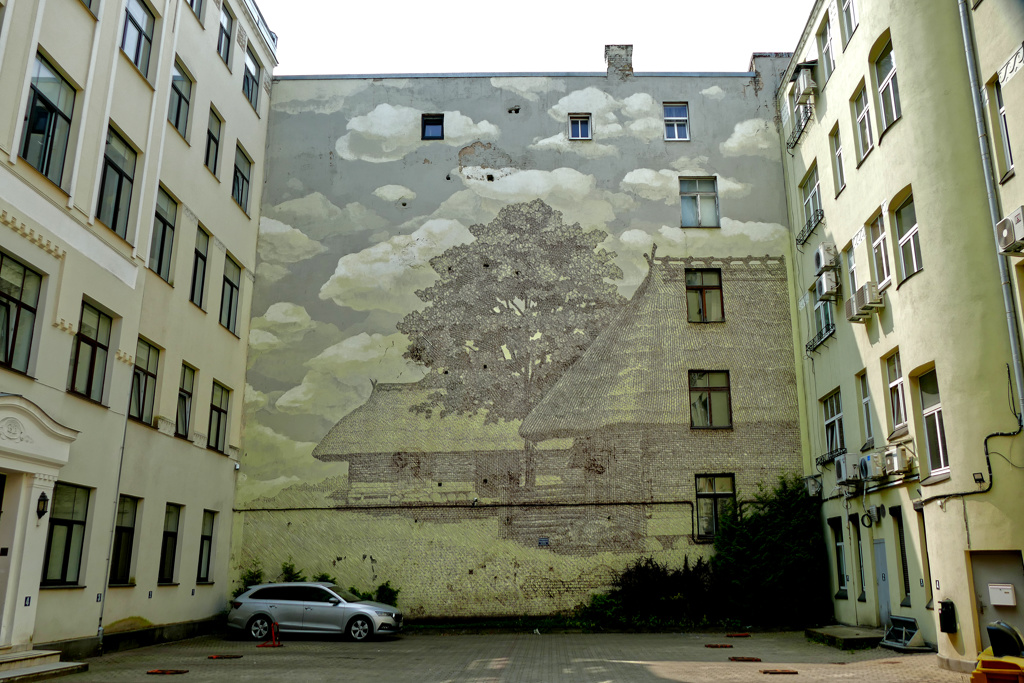
€uro / 1 €UR = 1.16 US$ as of November 2025 / current rate
Contactless payment, as well as credit cards, are widely accepted.
 Emergency Contacts
Emergency Contacts
112 is the universal emergency number that will connect you to police, the fire patrol, and ambulance services.
 Airport
Airport
RIX Riga Airport / IATA-Code: RIX
 Tourist Info Online and Onsite
Tourist Info Online and Onsite
Riga Tourist Information Center
Ratslaukums 6
Riga, LV-1050
 Getting Around
Getting Around
The most budget-friendly and convenient way to get from Riga International Airport to the city center is by taking public bus number 22. The bus stop is located just outside the arrivals hall. A ticket costs 1.15 €uros if you purchase it in advance from ticket machines, Narvesen convenience stores, or the airport’s information desk. If you prefer to buy your ticket directly from the driver, the cost is slightly higher, around 1.50 to 2.00 €uros.
Bus 22 operates frequently, with departures every 10 to 20 minutes throughout the day. The service starts in the early morning around 5:30 a.m. and continues until about 12:30 a.m.
However, Riga has a network of trams, buses, and trolleybuses. This combination of different modes of transport ensures comprehensive accessibility.
A single ticket for a 90-minute journey costs 1.50 €uros. In my experience, however, it’s a good idea to purchase day tickets. These cost 5 €uros for 24 hours, 8 €uros for 72 hours, and only 10 €uros for 5 days! Tickets are available at ticket machines, kiosks, or via the official Rīgas Satiksme app. Contactless payment methods such as bank cards are also accepted.
 Morning Activities
Morning Activities
On a sunny day, it’s a great idea to explore Riga on a long walk. If you don’t want to go alone, you can also join a free walking tour, although this is, of course, based on tips.
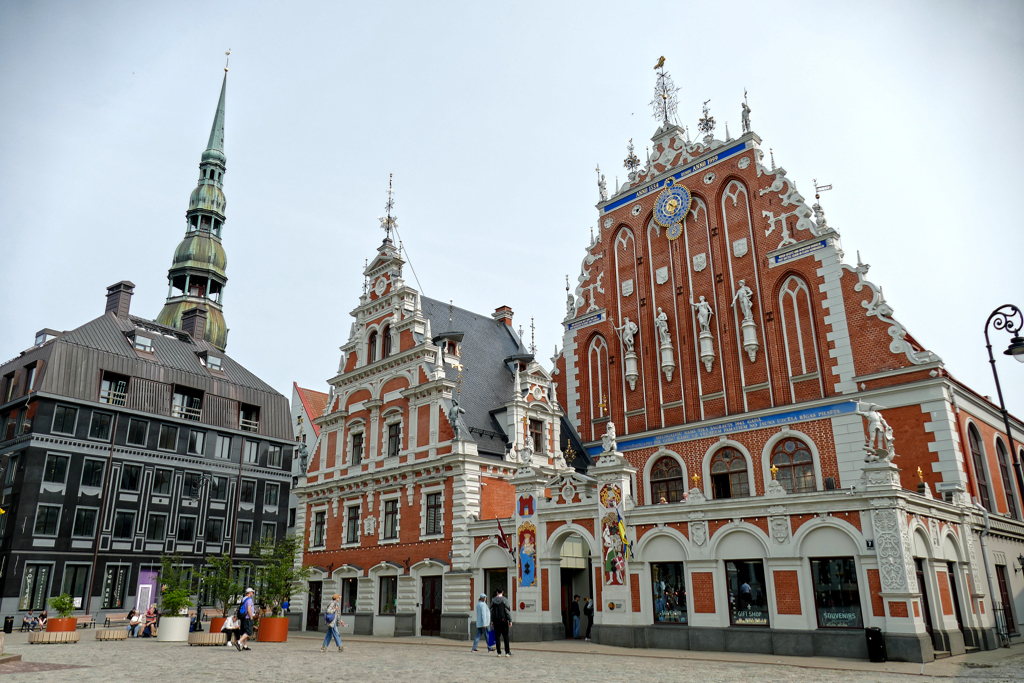
A good starting point is the Town Hall Square, especially since it is also home to the tourist information office and some of the city’s most iconic buildings.
Here, Hanseatic history meets modern national identity. The most striking building on the square is the House of the Blackheads, a magnificently reconstructed late Gothic structure with a richly decorated façade. Originally built in the 14th century as a meeting place for the Brotherhood of the Blackheads – an association of unmarried foreign merchants – it is now considered one of Riga’s landmarks.
In the center of the square stands the Roland statue, a symbol of justice and freedom in medieval Hanseatic cities. It testifies to Riga’s long tradition as a self-confident trading city. On the western side of the square is the Latvian Museum of Occupation. This clear-cut building stands out from its historic surroundings.
Just a few steps away rises the mighty St. Peter’s Church, whose tower and observation deck offer a sweeping view of the Old Town. It is one of the oldest churches in the city and has been destroyed and rebuilt several times. Together, these buildings form the city’s impressive historical core.
It Runs in the Family
From here, the route continues to Cathedral Square.

There you’ll find impressive historical buildings such as Riga Cathedral, the Stock Exchange, and the Radio Building.
A network of narrow, picturesque streets frames it. Here you’ll find ornate façades, cute little specialty shops, and truly cinematic cobblestone alleys.
One of the highlights is the Three Brothers, a striking example of medieval residential architecture in the Baltics.

The adjacent houses at Mazā Pils iela 17, 19, and 21 form the oldest surviving group of residential buildings in the city. They were named after the Three Sisters group of houses in Tallinn.
Each of the three buildings dates from a different era and reflects the transformation of urban architecture from the late Middle Ages to the Baroque period. The oldest house, number 17, was built around 1490 and displays typical features of the Late Gothic style with influences of the Dutch Renaissance.
The middle house, number 19, was built in 1646, as evidenced by the date carved into the façade. It is considered the most architecturally elegant of the three buildings and is in the Dutch Mannerist style.
Finally, number 21 is the youngest of the Three Brothers and was built in the late 17th century. It is simple in design, with a Baroque façade, small rectangular windows, and a sloping roof.
Outside the Very Core

If you stroll north along Jēkaba iela, you’ll come to the 17th-century Swedish Gate, once part of the medieval city fortifications. On the other side, formerly outside the city walls, lies the picturesque Torņa iela. It offers an atmospheric stroll along the medieval walls. Lined with small cafés and restaurants, it’s a great place to take a short break during your sightseeing.
Torņa Street leads to the Bastion Hill, a sprawling, hilly green space with waterfalls, small bridges, sculptures, and a swan house.
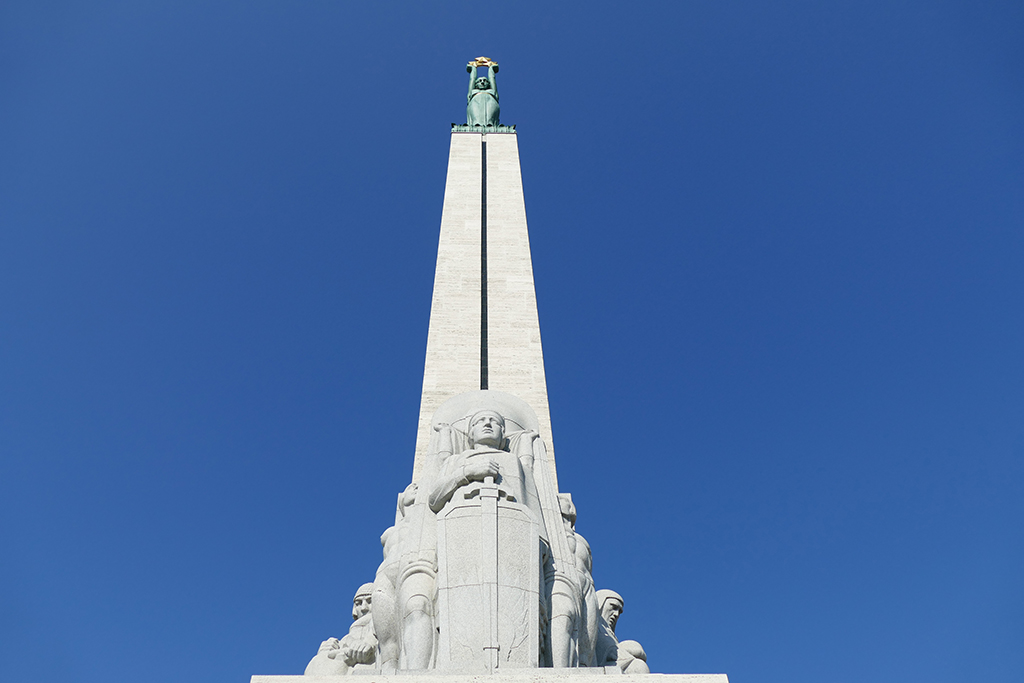
The Freedom Monument, a 42-meter-high statue honoring the Latvians who died in the 1918-1920 War of Independence, also stands here.
From here, you can walk south along the canal towards the Central Market in about 15 minutes. There, you’ll have lunch.
 Morning Activities
Morning Activities
A rainy day in Riga doesn’t have to be gloomy. On the contrary, the city unfolds its own unique, tranquil charm.
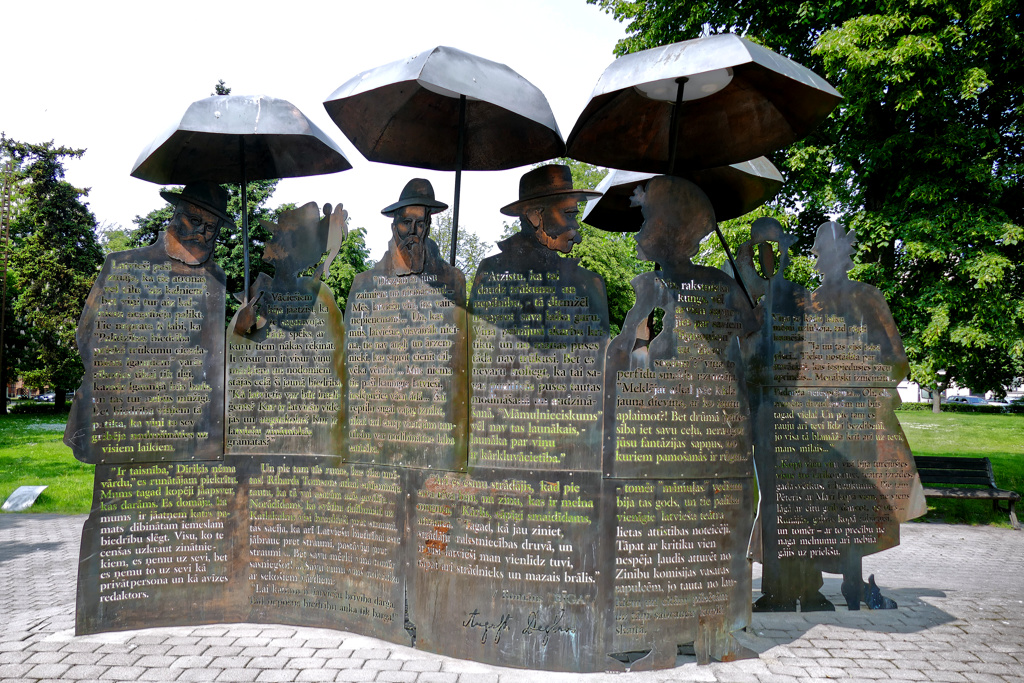
Whether it’s culture, coffeehouses, museums, or wellness, there are many ways to experience Riga in a dry and enjoyable way.
The iconic House of the Blackheads stands directly on Town Hall Square. Originally built in 1334, it served as a meeting and banquet hall for merchants.
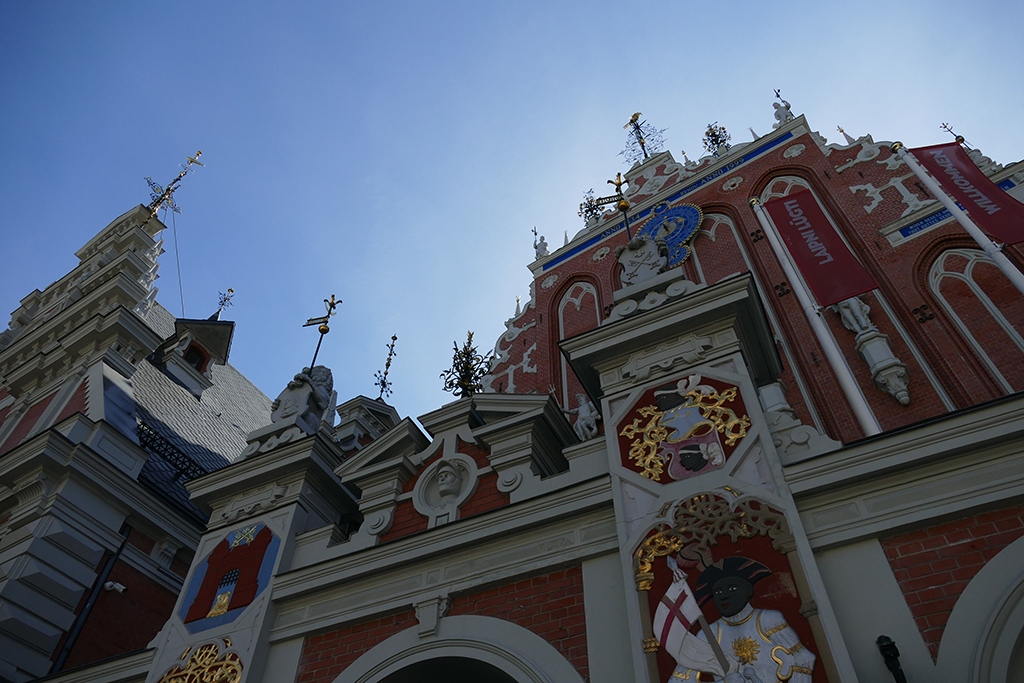
Later, the Brotherhood of the Blackheads, an association of unmarried, mostly foreign merchants, took over its use. The building acquired its magnificent character in the early 17th century, when it was remodeled in the Dutch-Flemish Renaissance style. Particularly striking are the richly decorated façade and an astronomical clock dating from 1626.
In 1941, the building was severely damaged by bombing and subsequently demolished by the Soviet government. Only the medieval cellar, with its 14th-century walls, floors, and even wooden staircases, survived. After Latvia’s independence, the city of Riga decided to rebuild it.
Today, the house is a true highlight for visitors. The magnificent halls, the silver collection, historical cabinets, and the medieval cellar can be visited daily between 10 a.m. and 5 p.m. Entrance costs 7 €uros and even includes a coffee.
Look Back in Pain
Just around the corner is the Museum of the Occupation of Latvia, a central memorial site dedicated to Latvia’s history between 1940 and 1991. It documents the period of Soviet occupation, the German occupation during World War II, and the renewed Soviet rule until Latvia’s independence.
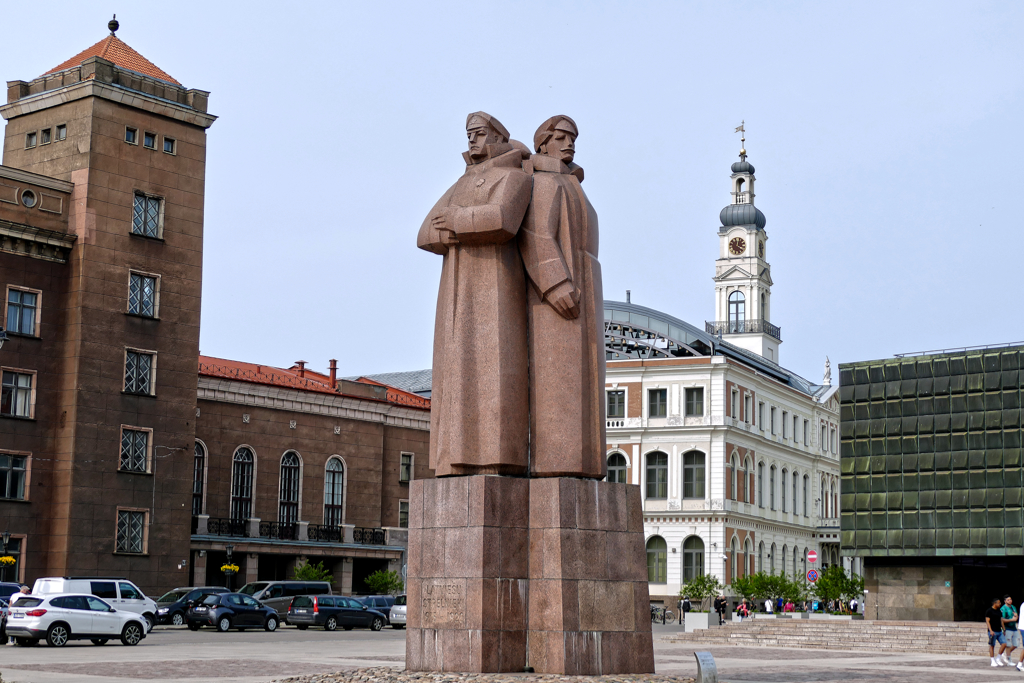
The permanent exhibition has been continuously expanded over the years and reopened in a new format in 2022. The collection now includes around 60,000 objects, including everyday objects, documents, and personal mementos. A large audiovisual archive with over 2,300 video testimonies and more than 4,000 hours of film material gives the victims a voice.
The museum is open Thursday to Monday from 10 a.m. to 6 p.m. Admission for adults is 8 €uros.
In addition to the main building, the museum also hosts an exhibition in the former KGB headquarters. There, visitors gain a vivid insight into the activities of the Soviet secret service in Latvia and the repressions that originated in this house.
It’s about a quarter of an hour’s walk from Town Hall Square to Riga’s Central Market. If it’s raining too much, you can take one of the trams that stop south of the square at the Akmens Tilts Bridge. You have to get off at the stop 13. janvāra iela. From there, a tunnel leads to the market.
 Lunch
Lunch
No visitor to Riga should miss Riga’s Central Market. It is the city’s most vibrant landmark and a must-see for anyone who wants to experience the authentic atmosphere of the Latvian capital.

Opened in 1930, it still ranks among the largest and most impressive markets in Europe, covering an area of over 70,000 square meters. Its uniqueness lies not only in the size and variety of goods on offer, but also in its extraordinary architecture.
The five massive pavilions that house the market were originally built as zeppelin hangars during World War I and later converted for commercial purposes. This combination of monumental industrial design and a bustling marketplace has earned the Central Market a place on the UNESCO World Heritage List.

Today, it reflects Latvia’s culinary treasures, such as rye bread, pickled vegetables, and smoked eel.
Nevertheless, not only can you admire tons of Instagrammable produce, but you can also enjoy a very good and reasonably priced lunch here.
 Afternoon Activities
Afternoon Activities
After lunch, you’ll certainly want to take a long stroll through the market and enjoy the bustling atmosphere for a while. Afterwards, you can walk through the Spīķeri district, not far from the market. In the 19th century, it was a warehouse complex. Eventually, the area has been carefully restored and transformed into a creative hub.
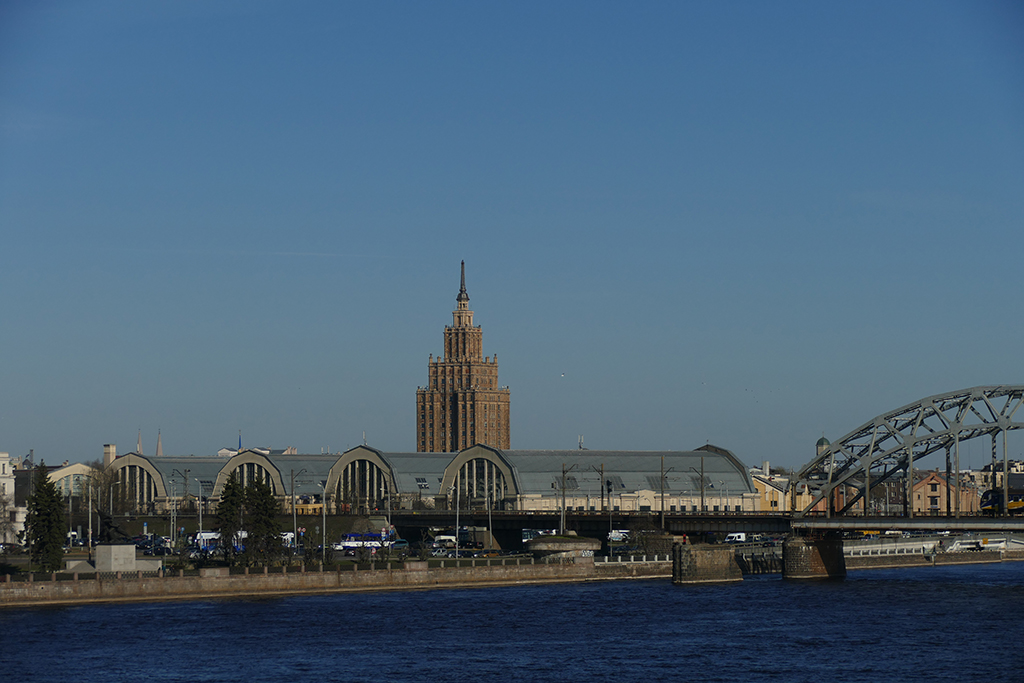
The former brick warehouses now house galleries, design shops, event spaces, and cafés. The promenade along the Daugava River, which connects the district to the river, is particularly charming.
At the eastern end of the Spīķeri district is the Riga Ghetto and Holocaust Museum, located in the historic Moscow Suburb district, near the site of the former ghetto.
Opened in 2010, it commemorates the fate of Latvia’s Jewish community during the Nazi occupation. Outdoors, you can see reconstructed ghetto barracks, exhibitions on individual stories, as well as documents and photographs. The museum is open Sunday through Friday from 10 a.m. to 6 p.m. Admission is generally free, but voluntary donations are welcome.

A visit to Riga wouldn’t be complete without enjoying the beautiful Art Nouveau architecture that is found mainly around Alberta iela and Elizabetes iela on the northwestern side of the historic old town. Obviously, you can walk there in a bit over 30 minutes. However, taking tram #7 to Ausekļa iela might be the more convenient option.
Later, you can either walk in less than 30 minutes to the dinner place. Or you take a tram to the stop Nacionālā opera and walk from there.
 Afternoon Activities
Afternoon Activities
After an extensive stroll through the covered market, hop on tram #7 to visit more amazing museums. Get off at the stop Nacionālais teātris and walk to the wonderful Latvian National Museum of Art.
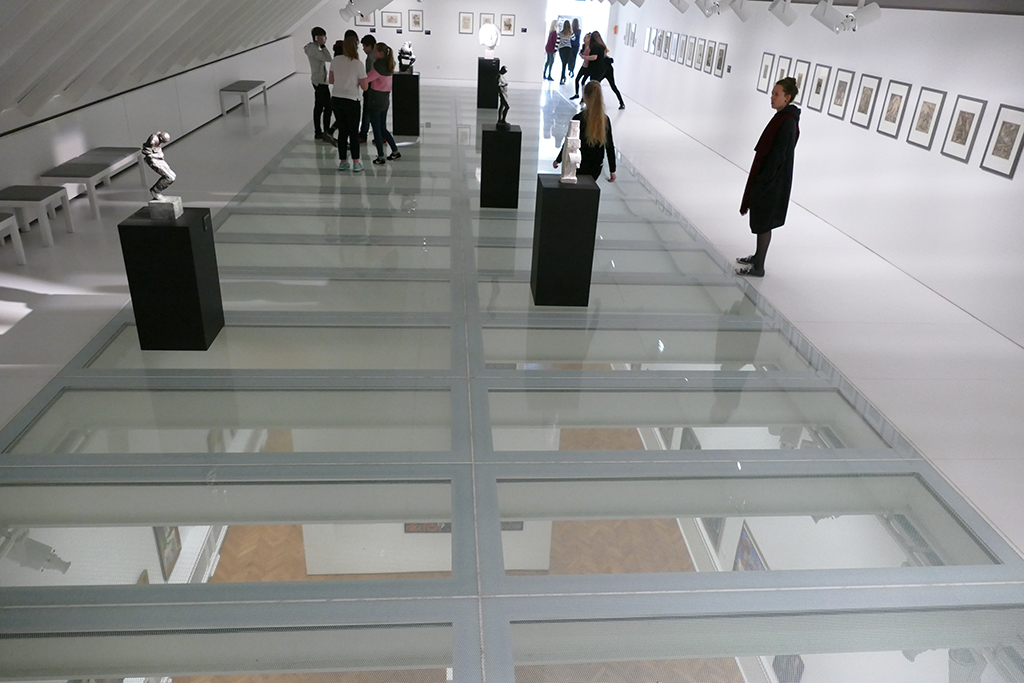
The Latvian National Museum of Art is one of the most important cultural sites in the Baltics. This magnificent building was built specifically as a museum at the beginning of the 20th century and, after extensive renovations, was expanded to include modern spaces. Even from the outside, it impresses with its baroque and eclectic forms; inside, visitors await an elegant blend of historical details and contemporary architecture.
The collection comprises over 65,000 works and offers an impressive overview of the development of Latvian art from the 18th century to the present day.
Don’t miss the magnificent view of the city from the museum’s observation deck!
The museum is open from Tuesday to Thursday between 10 a.m. and 6 p.m. On Fridays, they are closing only at 8 p.m. and on weekends already at 5 p.m. The general entrance fee is 7 €uros.
Don’t You Miss It
Riga is considered one of the Art Nouveau capitals of Europe. Around a third of the buildings in the city center date from this era. They are characterized by richly decorated facades with floral ornaments, mythical figures, and geometric patterns, designed by architects such as Mikhail Eisenstein.
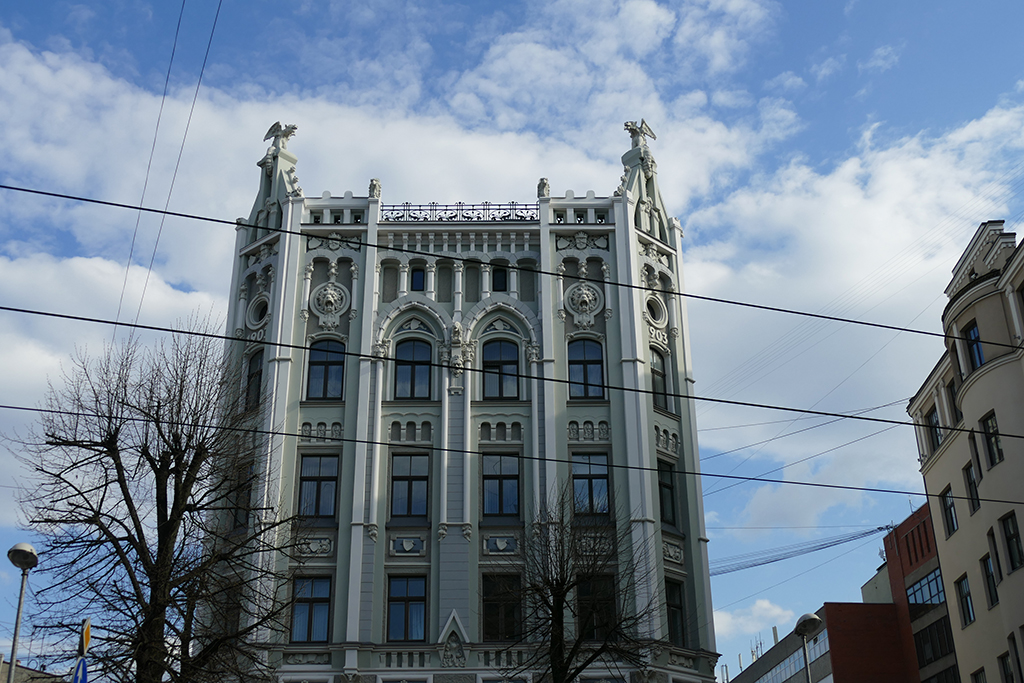
A walk through the architecture is, of course, no fun in the rain. Fortunately, there’s the Art Nouveau Museum! The museum building was built in 1903 as the private residence of the famous Latvian architect Konstantīns Pēkšēns.
Visitors can tour a fully furnished Art Nouveau apartment, displaying furniture, handicrafts, and everyday objects of the period, as well as learn more about the architectural and cultural history of Riga around 1900. The house can be visited from Tuesday to Sunday between 10 a.m. and 6 p.m.
Unusually, admission tickets are only 5 €uros from October to April and 9 €uros from May to September.
To get to the restaurant where you’ll have dinner, take bus #24 at the Elizabetes iela stop and get off at Centrālā stacija. From there, it’s a ten-minute walk to the Folkklubs ALA Pagrabs.
 Dinner
Dinner
For your dinner, I have the perfect place right in the city center. It’s a traditional, rustic, dark, and noisy restaurant in a cellar, with stone walls, wooden chairs, benches, and tables, Latvian classics blaring from the speakers.

Friendly, English-speaking waiters bring you a quite small menu from which you can choose a variety of typical Latvian delicacies. Latvian cuisine at last! Latvian cuisine at its best!
Choosing the right beer with your food is almost more challenging than picking the right dish. There are so many great options!
Folkklubs ALA Pagrabs is located on Peldu iela 19. It is open every day from noon to at least 1 a.m., from Wednesday to Saturday, even until early morning.
 Nightcap
Nightcap
After dinner, you can still enjoy another drink right at the Folkklubs ALA Pagrabs.

If you prefer a somewhat posher vibe with your last drink in Riga, you can walk to Gutenbergs Rooftop Restaurant, which is located less than ten minutes away at the Hotel Gutenbergs* in the vicinity of the Dome Square.
 Accommodation
Accommodation
If you are in Riga on a short layover, staying halfway between the airport and the center will be the perfect option: it will take you 15 minutes downtown as well as 15 minutes to the airport by public bus! You can book your stay at the highly recommended Rixwell Elefant Hotel* right here.

However, in my post Kepler Club at the Airport in Istanbul, Kuala Lumpur, and Riga, I’m introducing the ingeniously designed capsule hotel Kepler Club*, which is especially recommended if you’re landing extremely late or taking off very early.
Obviously, you can check out the availability and prices of other great lodging options on this map*:
Map
This map should help you to easily find all the wonderful places I’m introducing in this post. To switch between the itineraries for a sunny and a rainy day, just open the legend at the top left corner, and you can hide or unhide the respective layer as you wish. This way, the map will show only the section you really need and be clearer.
If you have more time to spare in Riga, make sure to check out my comprehensive post Best of RIGA – a Guide to Latvia’s Entrancing Capital. There you’ll find lots of places and activities to choose from. If you are specifically interested in the city’s vibrant street art scene, make sure to check out my post Best Street Art in RIGA.
Pinnable Pictures
If you choose to pin this post for later, please use one of these pictures:
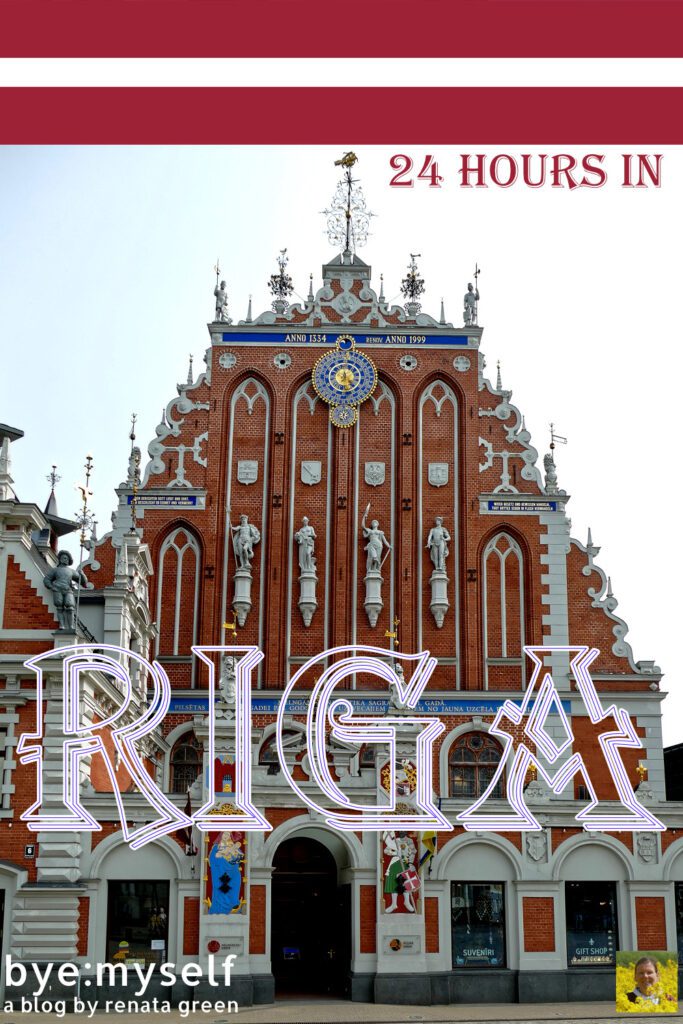


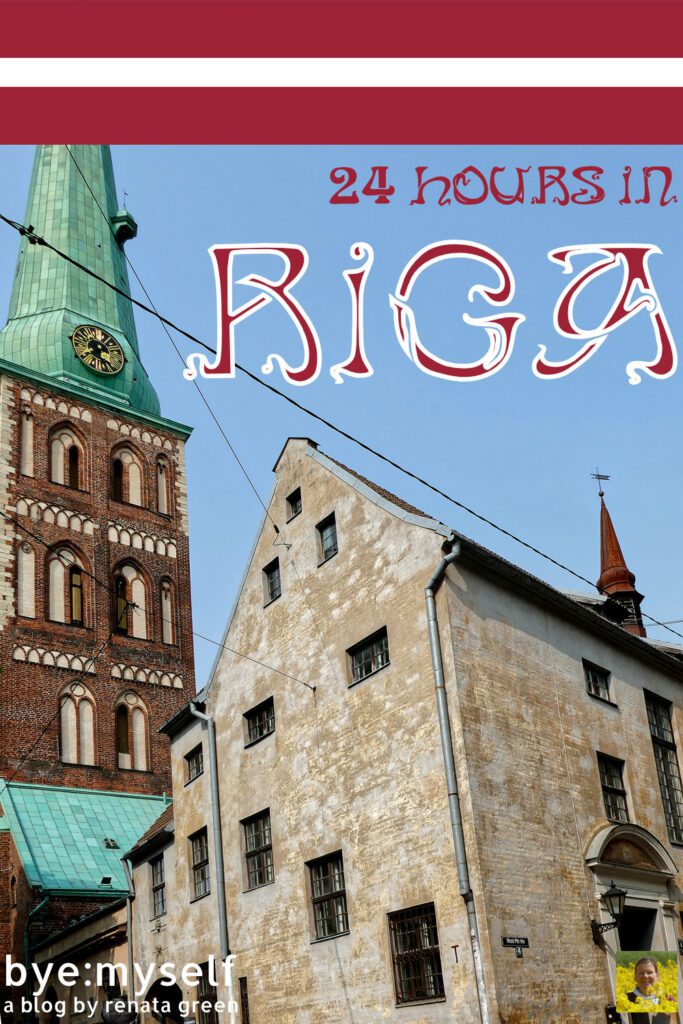
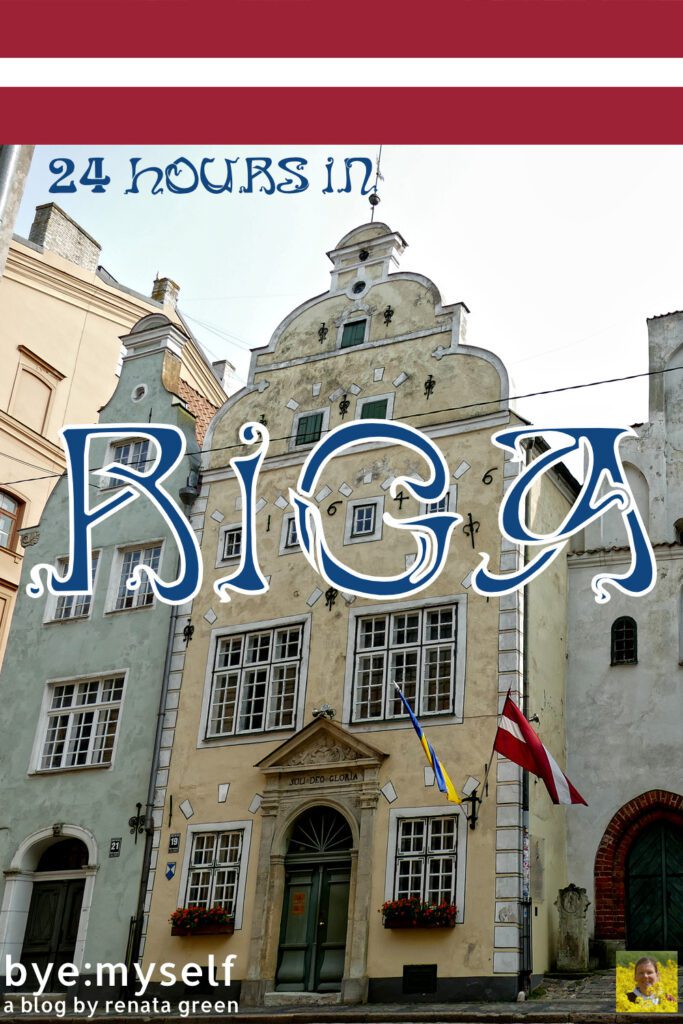

Did You Enjoy This Post? Then You Might Also Like These:
24 hours in ZURICH
24 hours in AMSTERDAM
24 hours in BRUSSELS
24 hours in KUALA LUMPUR
24 hours in FRANKFURT
24 hours in LONDON
24 hours in PARIS
24 hours in BARCELONA
Disclaimer: * This is an affiliate link. If you book through this page, not only do you get the best deal. I also get a small commission that helps me run this blog. Thank you so much for supporting me!
Icons: money bag by Roundicons from www.flaticon.com, police car, train, sun, glass, and bed by Freepik from www.flaticon.com, takeoff plane and board made by ultimatearm from www.flaticon.com, info made by Roundicons from www.flaticon.com, umbrella made by Kiranshastry from www.flaticon.com, food plate by Vectors Market from www.flaticon.com
